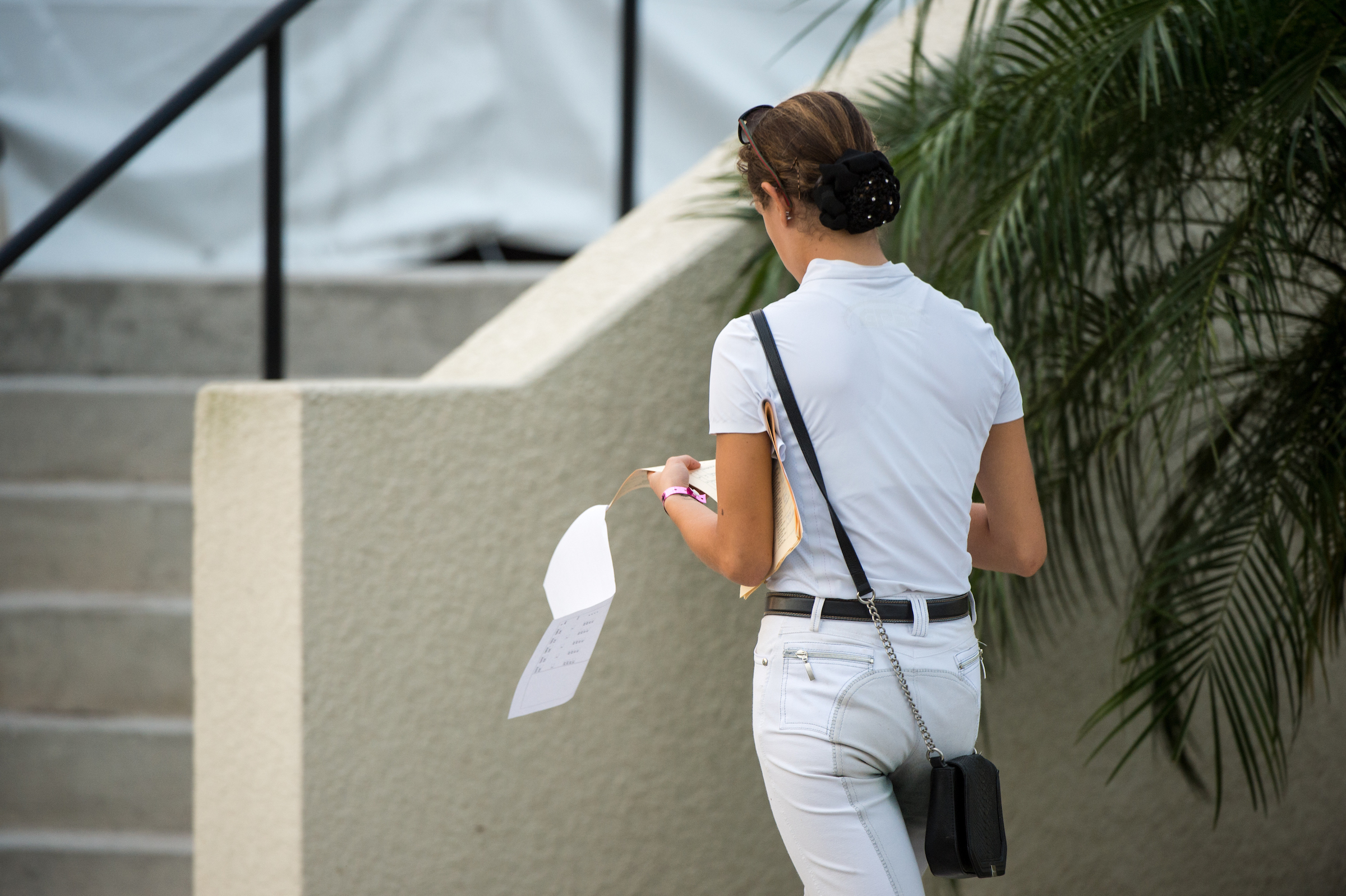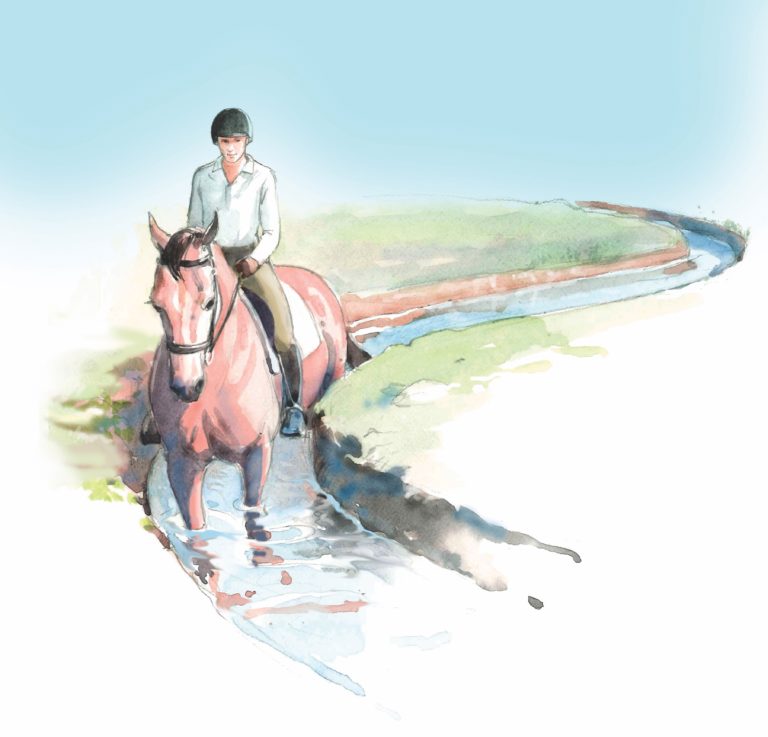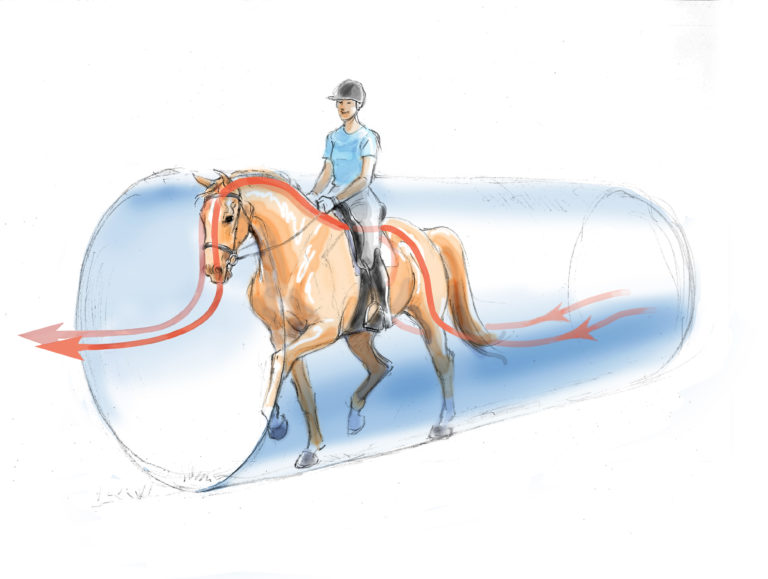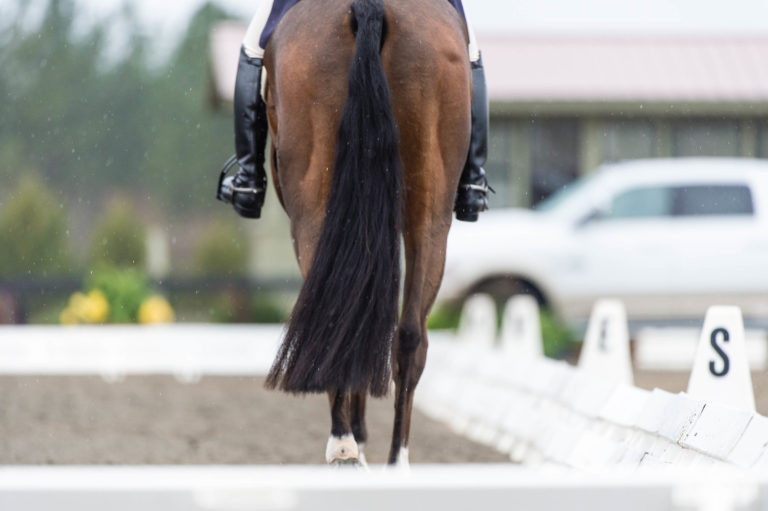Q: I’m confused about the terms “engaging the hindquarters,” “asking the horse to step” and “going forward.” Sometimes my clinician tells me to engage my horse’s right hind leg more; at other times I’m asked to get him to step more. Don’t these terms refer to the same concept: driving the horse so he reaches into both reins evenly and is on the bit, which naturally encourages his hind legs to move correctly?—Name withheld by request
A: In the USDF Member Guide there is a glossary of judging terms. This useful list can be especially helpful for deciphering a judge’s comments on your test. In an ideal world, both judges and instructors would attach the same meaning to every dressage word, and in the main they do. But there are exceptions that bear discussion.

For instance, the glossary definition of “forward” is “to or toward the direction that is ahead or in front of the horse or moving or tending toward that direction.” It continues, “References to specifics such as impulsion, energy, reach, length of stride and tempo more accurately express how the horse should proceed forward.”
So it follows that if you see the term “forward” in a comment from a recognized judge on a test sheet or you hear it from a USDF-certified instructor, it refers to the direction your horse is headed. However, in daily training and teaching, it is common to use the term “go forward” to mean add impulsion, activity, tempo and energy. Using “go more forward” to mean “add energy and impulsion” is a hard habit to overcome, and many instructors, clinicians and riders just accept this meaning. From the sound of it, this is what your clinician meant.
In the glossary, “step” is defined as “referring to either the front or hind pair of legs, the movement that involves transfer from one limb to the other.” From a judging and training perspective, it means counting the number of steps of rein back or piaffe. It is different from the word “stride.” However, in a training session, your clinician may use “step” to encourage you to add more step, as in add more energy or tempo.
If English is the clinician’s second language, he or she may intend the word “stride.” In this case, “show more step” may mean “increase the length of stride or the scope of the stride.” Whenever you’re in doubt, ask your clinician what specifically is required.
Nothing is worse for an instructor than repeating a direction over and over, thinking the student knows exactly what you mean, only to find out later that the rider had a different idea. It is always better to ask a question early on and get some clarification.
Now we come to a phrase on whose meaning we all can agree. The glossary says that “engaging the hindquarters” is the “increased flexion of the lumbosacral joint and the joints of the hind leg during the weight-bearing phase of the stride, thus lowering the croup relative to the forehand.” Furthermore, the glossary states, “Engagement is carrying power, rather than pushing power.” Whether you are reading a test or taking a lesson, “getting more engagement” from your horse means getting more carrying power and lightening the forehand. Of course, there are endless other descriptions for this skill, but “engaging the hindquarters” is a well-understood and common phrase, where there is little room for misinterpretation.
Lastly, let me address your question about engaging the right hind. Often a horse will favor one leg for sitting and engagement and the other for pushing. Part of dressage training is to get him to use both legs evenly for both tasks, depending on his level of training. It is common for the right hind to get out from under the center of the horse when he uses it to push. So when your instructor tells you to engage the right hind more, he is giving you specific guidance to encourage your horse to carry more weight on that leg, therefore evening out the carrying duty. It is always handy to have an educated eye on the ground; taking advantage of your clinician’s experience is a smart thing to do.

Debbie Rodriguez is a USDF gold medalist, a USEF “S” dressage judge and “r” eventing judge. She is show manager for Dressage at Lexington and developed “Success in the Saddle,” a core-fitness program. She teaches and trains in Virginia (debbierodriguezdressage.com).











